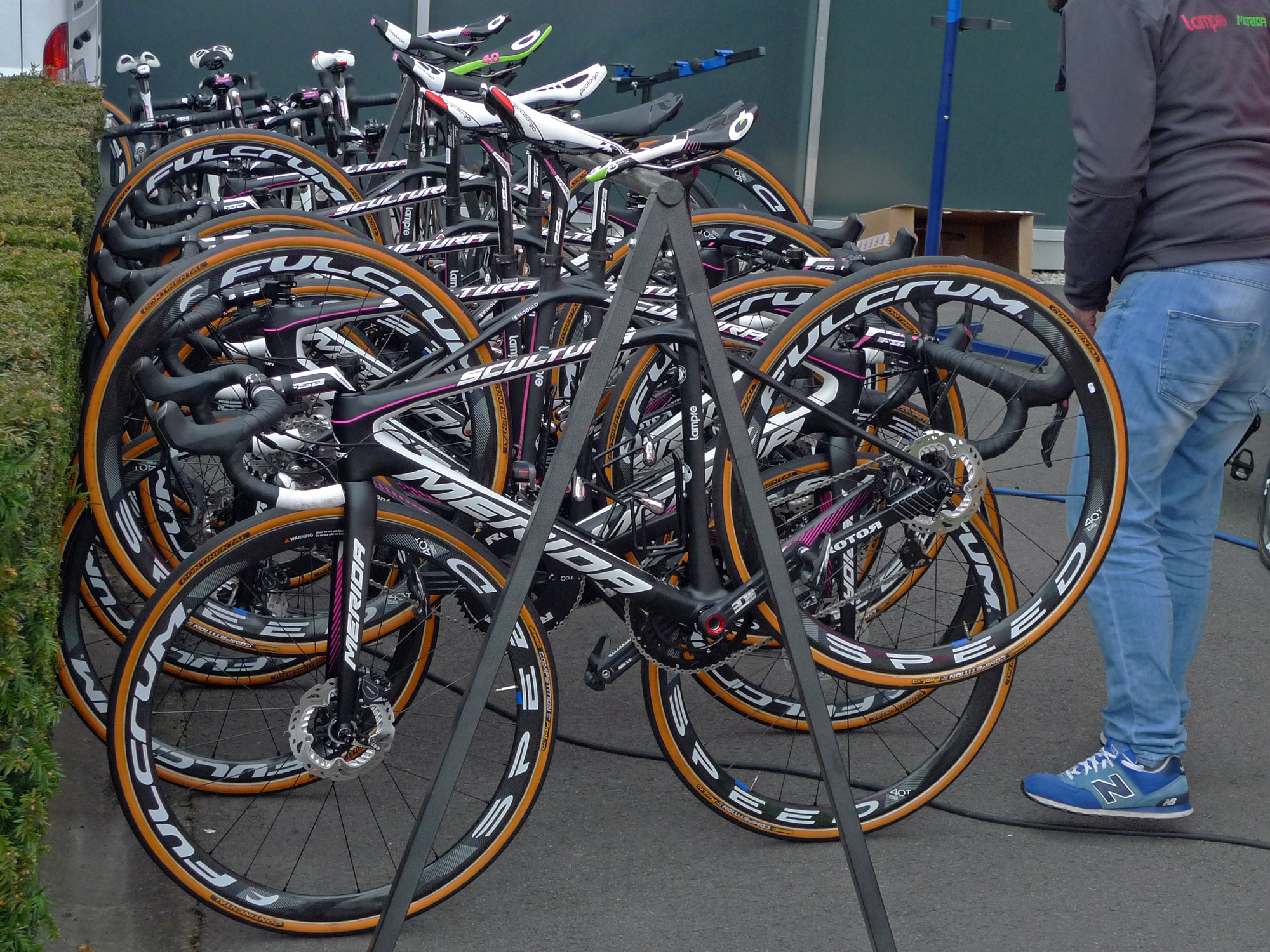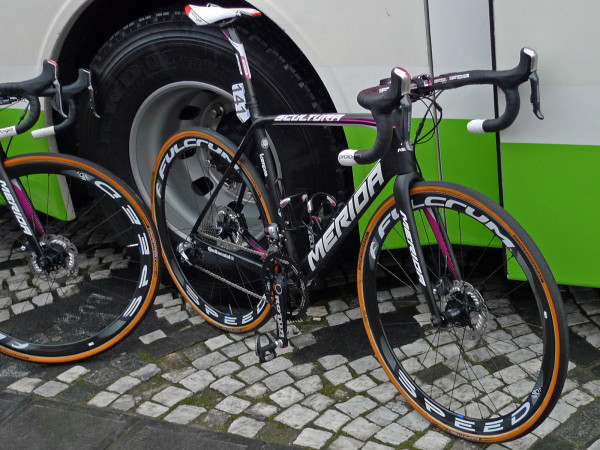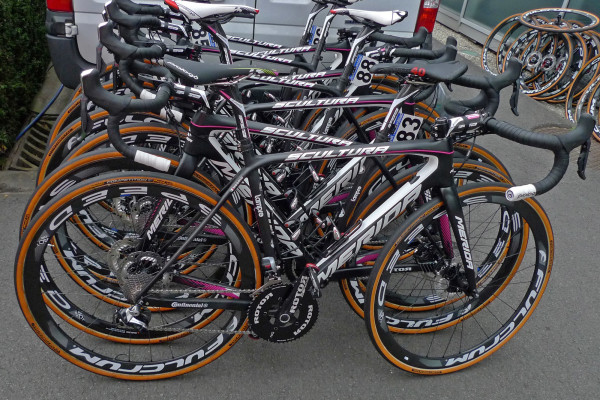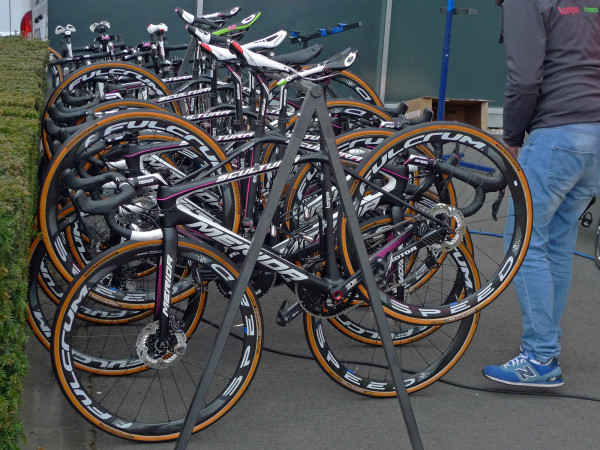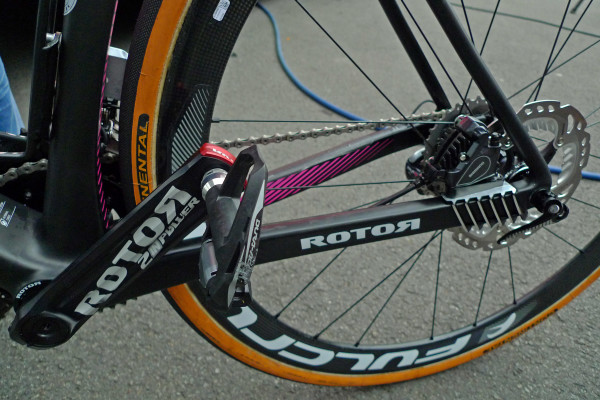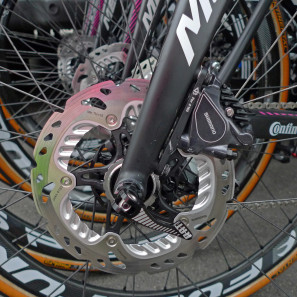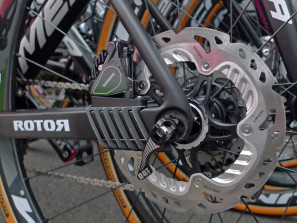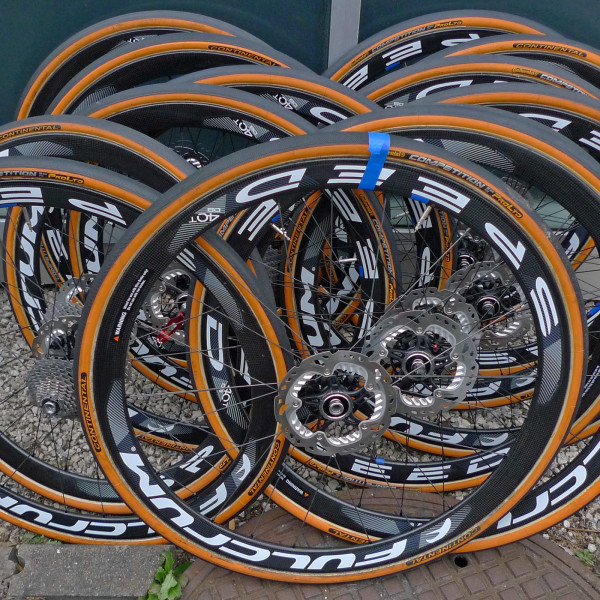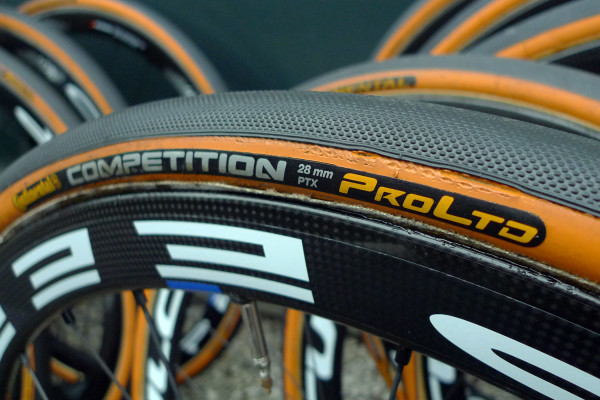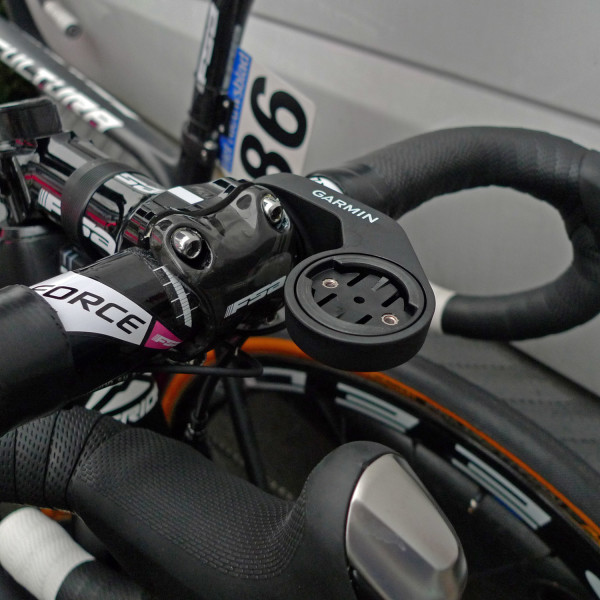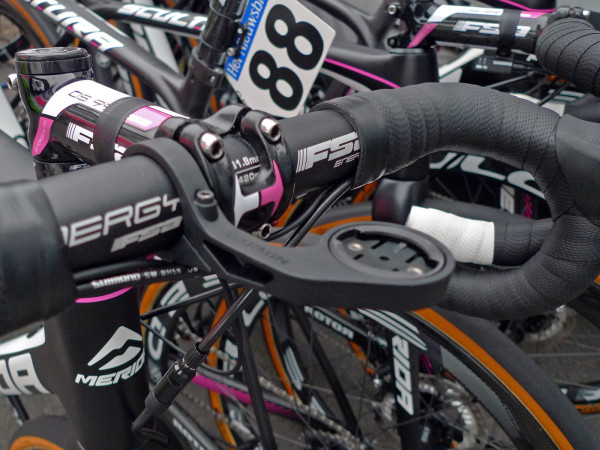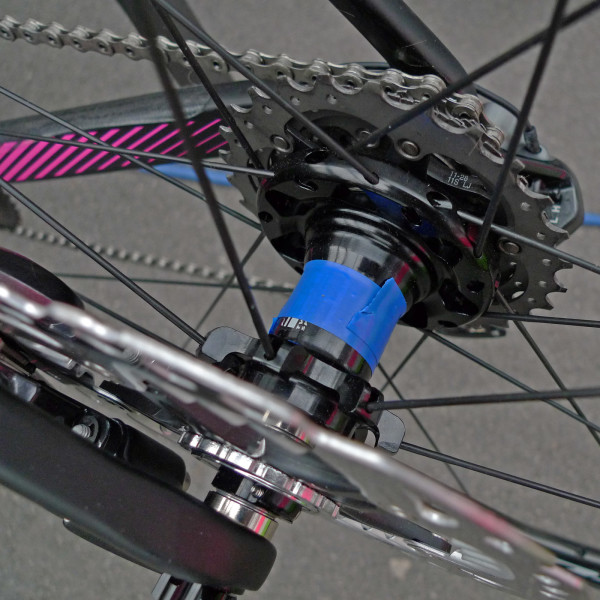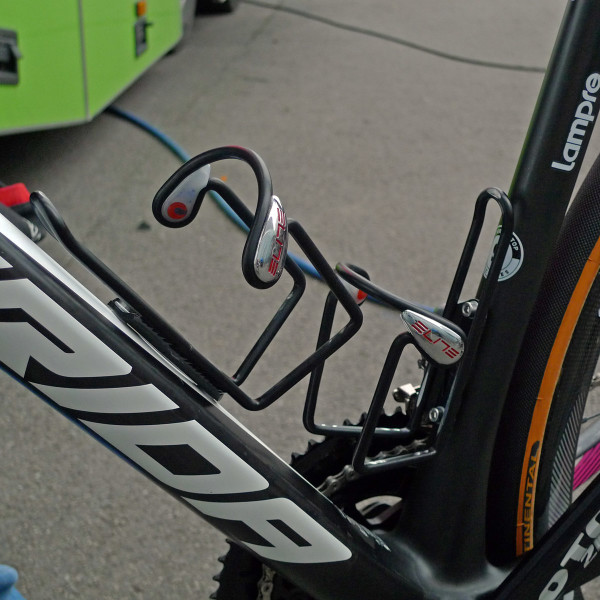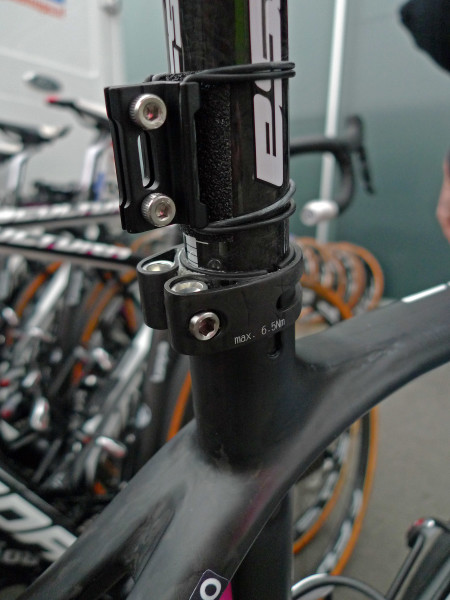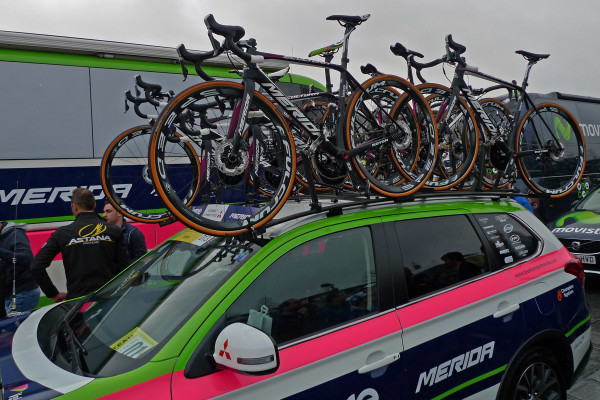The first Pro Tour team to enter a race entirely on disc brakes, Lampre-Merida lined up at the start in Brugge over the weekend for the Tour of Flanders with a pack of new disc brake road bikes for the cobble-climbed Spring Classic. Even though the race started under cloudy skies on roads still wet from morning rains, strong winds and sunshine to the south and through the heart of Flanders left most of the course dry and the cobbles relatively clean. Nonetheless, while a couple of the other top teams had talked about experimenting with discs, Lampre-Merida was the only one of the top classification teams to go all in. There was another team with a couple of riders on discs, and a whole other Pro Continental team on discs, and we’ll get to those later. For now take a closer look at the Scultura Disc with us after the break…
At first glance the team bikes look mostly similar to the rim brake version that we detailed at the Tour Down Under, a closer look reveals some big differences. The build spec is pretty much the same, with Shimano Dura-Ace Di2, Rotor 2InPower cranks, FSA cockpit, and Fulcrum Speed wheels.
The overall shaping of the frame tubing is visually the same as the standard Scultura. But on this Merida’s non-driveside chainstay, we can see the big changes to accommodate disc brakes. Merida has gone with a flat mount and integrated a large aluminum heat sink that clamps around the chainstay to dissipate heat and provide a solid brake mounting point.
The fork uses a more straight forward-looking flat mount without additional heat sinks. A closer look at the rear shows that the heat sink does not appear to be imbedded in the carbon of the stay, but rather clamps over the place where the flat mount bolts enter into and extend through the chainstay to be attached. This suggests that the heat sink may be removable, and that perhaps it may be possible that Merida will develop one for the fork as well?
Both ends do get thru-axles (RAT tech licensed from Focus it seems), using the newly accepted 12mm road standard. Interestingly, Lampre-Merida was riding Centerlock 160mm Shimano Freeza rotors both in front and back as well, either for added braking power or just compatibility with the neutral support setup provided by Shimano. Based on the position of the flat mount adapters on both frame and fork though, it looks like there is compatibility for 140mm rotors too.
Lampre-Merida was one of about a dozen teams between the men and women riding Continental Competition ProLtd tubulars. The entire team was on a 28mm wide version of the pro-only BlackChili tire. It’s not clear if the tires use a vulcanized or more handmade construction, based on the look of the natural rubber sidewall, and separately glued on tread. The frame and fork do get ample clearance for these tires, and it looked like still a bit of room to spare for mud and debris, so maybe even bigger tires could be squeezed in as well.
Wheel wise the team was all rolling on Fulcrum Speed 40T DB tubulars. Outside of the removal of the brake track and updated graphics, we didn’t see any difference in shape from the standard Speed 40T. They do not use the carbon/alloy hub bodies of those wheels though, instead opting for the same straight-pull alloy hubset of the currently available Racing Quattro wheels.
Besides a number of custom finished saddles, the one place where the team varied from rider to rider was in the FSA cockpits. While some riders went with the road buzz soothing K-Force carbon handlebars, others opted for the butted aluminum Energy bars. Stems also varies from some older SL-K alloy stems with solid carbon faceplates, to the team-colored OS99 which adds a carbon skin over a forged alloy stem and faceplate. They also got a mix of Garmin Out-Front mounts in standard and extended versions.
For cassettes Lampre-Merida was all on 11-28s, as were most other teams to tackle the steep 20+% cobbled slopes of Flanders. To keep bottle in place carbon cages were tossed aside, and replaced by the classic, secure, and adjustable Elite Ciussi Gel aluminum water bottle cages. Even for the bump road ahead, team mechanics were confident in the holding power of the standard Scultura’s light carbon strap-style seatpost binder clamp. The riders do get a nice little machined alloy number plate holder held around their seatposts with a couple of hopefully sturdy o-rings.
In the end Lampre-Merida didn’t fare so well in the race. They really aren’t a classics powerhouse, after all. But young rider Federico Zurlo did spend a good part of the day in the main breakaway before finishing deep in the pack. And the team did make a bit of a mark as the first Pro Tour team to make the jump to disc brakes.
